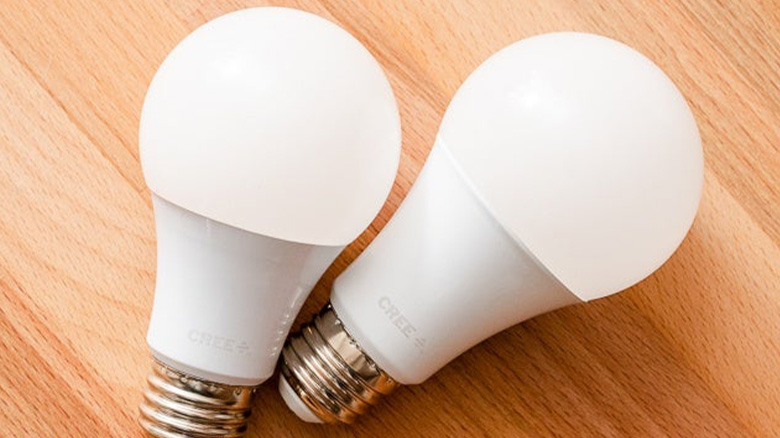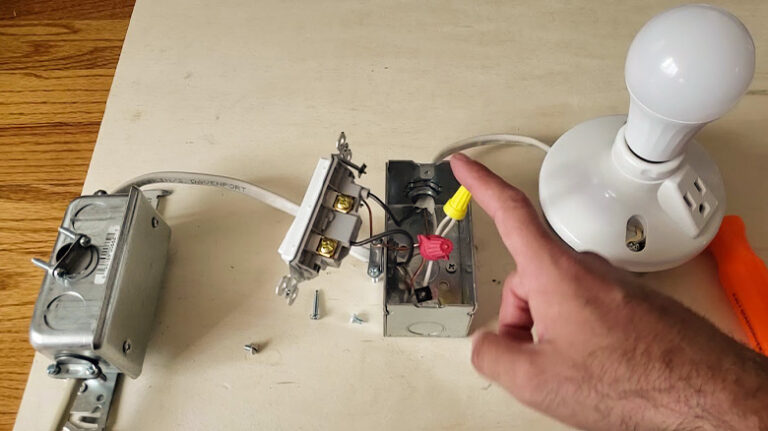Can You Use A Dimmable Bulb In A Regular Lamp? You Must Know
You can instantly change the atmosphere and ambiance of a space by turning a small knob on the wall of their living room. The more your light bulbs remain dimmed, the less power they consume and the better they last. Dimming bulbs have several less evident and equally positive effects, such as decreased energy use and greater durability being eco-friendly. Got it? Great!

Modern light bulbs now last better than ever thanks to the widespread use of LED light in recent times, which has resulted in drastically lower wattages and greatly increased lifespan. The hows and whys of dimming LED bulbs and how to set them up in your home are all covered in this article. So, let’s begin.
How Dimmable LED Light Bulbs Is?
Particularly designed for dimmable circuits are dimmable bulbs (i.e. when you have a dimmer switch on the wall). The ability to dim the lighting may radically alter the space’s ambiance while using less electricity, which is why they are so popular. While most contemporary light bulbs, including LEDs and halogen, come in dimmable varieties, fluorescent tubes need to be equipped with dimmable ballast.
So why is a dimmable ballast required to dim fluorescent bulbs installed? Fluorescent tubes must have the proper control equipment to be dimmable, just like any other type of light bulb. Fluorescent tubes cannot be dimmed in the absence of a dimmable ballast.
The best dimmable light bulbs will depend on your fitting characteristics. Still, if you need downlight LEDs, the All In One LED dimmable downlight 10w (also known as the SOLO) is a great option because it has a variety of different fascias, and you can change its color temperature from warm white to daylight. Try one of the 8w downlight options for a downlight that costs less; these bulbs have waterproof fascias, can be dimmed, and are fire-rated to meet building code requirements.
Can You Use A Dimmable Bulb In A Regular Lamp?
Unlike neon or fluorescent lights, LED bulbs come in dimmable and non-dimmable variants. Although early LED lights were primarily non-dimmable, the dimmable ones are very popular now. It was made possible by advancements in LED technology.
And most of the LED light bulbs now come with dimming as a free or low-cost extra. Because of this, most LED bulbs are dimmable; only the cheapest LEDs are non-dimmable. Which gets us to the topic in the title: Is there a problem if I use a dimmable LED light with a non-dimmable switch or a regular lamp? The short answer is “no.”
Suppose you don’t have a dimming switch set. These bulbs will operate at full power and with the same effect as if connected to dimmable switches. You won’t be able to use the dimming function, which makes dimmable LED lights unique.
Dimmable LED lights are slightly more pricey than their non-dimmable counterparts when you think about it. Investing in dimmable LED bulbs might be wise if you intend to use LEDs for a long period. To enjoy dimming, you might also want to think about adding high-quality dimmer switches in the future.
Frequently Asked Questions
Are specific bulbs required for dimmable lights?
Only bulbs with the designation “dimmable” on their box will work with a dimmable fixture.
Is it possible to use a non-dimmable bulb with a dimmable connector?
The placement of a non-dimmable light into a dimmable fixture is not advised. Any dimmer change, even if made accidentally, might result in the lamp blowing out and melting from the heat. Simply use dimmable bulbs solely, have the dimmer uninstalled from the circuits, or if you must have dimming features, get an appropriate dimmable bulb instead.
Are specific bulbs required for dimmable lights?
Only bulbs with the designation “dimmable” on their box will work with a dimmable fixture.
For under-cabinet illumination, are dimmable bulbs usable?
Dimmable under cabinetry may be a useful addition to your kitchen’s lighting arrangement. Under-cabinet illumination is a great use for LED tubes and downlights. Based on your connection, dimmable LEDs, fluorescent light, and halogens are ideal for under cabinet illumination.
Why is the buzz in my dimmable light bulb socket?
When a light bulb is lowered, it’s not because less electricity is being sent to the bulb; instead, it’s because the bulb turns on and off so fast that it seems less light is being produced. In some circumstances, the frequent turning on and off might produce a buzzing noise.
The fact that the light in the socket is not dimmable is by far the most likely cause of a buzzing bulb. Change the lightbulb with a dimmable one as your first test to see if the buzzing stops. Try switching to a more contemporary dimmer switch if replacing the bulb doesn’t work. Dimmer switches that are cheap or outdated don’t reduce the electromagnetic field’s vibration, which might result in a buzzing noise.
Why is the flickering in the dimmable LED bulb?
Like buzzing lights, the main cause of dimmable bulb flickering is incompatibility with the dimmer switch. First, try replacing the bulb; if it doesn’t work, consider upgrading the dimmer switch.
Conclusion
Dimming LED bulbs can be challenging, but when done correctly, the advantages are unlimited, from the light bulbs’ increased efficiency and durability to the smooth, quiet dimming that looks far superior to its incandescent counterpart.
One more thing: you don’t have to be an expert to know why or how particular types of circuits function. We always suggest getting an electrician’s assistance while performing any kind of circuit repair. Always sure to be safe. It comes first.






